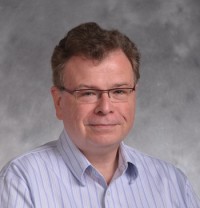Q&A with Dirk Dunning, Former Chemical Engineer with the Oregon Department of Energy
Oregon Hanford Expert Retires

For decades, Oregon relied on Dirk Dunning to tackle the most complicated problems at North America’s most contaminated place, the Hanford Nuclear Site. Dirk spent his career protecting the Columbia River from contamination left behind by America’s nuclear weapons program as a chemical engineer with the Oregon Department of Energy. I asked Dirk about the highlights, lowlights, and lingering problems with Hanford cleanup. The following is an excerpt of our conversation.
Q&A with Dirk Dunning
Recent news from Hanford has been alarming—workers inhaling plutonium, a tunnel collapse, and potential new leaks from doubleshelled tanks. Why do workers and the environment at Hanford keep getting put at risk?
The folks at Hanford truly do mean to do a good job. However, they have a very particular cultural past that is quite different from most of society. In the early days of nuclear weapons production, there was huge emphasis on making plutonium for bombs to beat the Russians . . . . Everything else was secondary—including public and worker health and safety. A side effect of that was [U.S. Department of Energy’s efforts to downplay] the impacts of radioactive materials on people. They did this for what they thought were good and valid reasons. And in time, they came to believe it themselves. This self-deception was aided by the random nature of radiation risk and by the long delay in consequences.
You were involved in some of the biggest successes in Hanford cleanup. What aspects of the cleanup are you most pleased with?
The Spent Fuel Project was my first, and one of my largest, successes. The Spent Fuel Project dried out, packaged, and removed over 2,400 metric tons of nuclear fuel from two failing basins adjacent to the Columbia River. The catastrophic risk there was as large as Chernobyl.
I proposed that the Tri-Parties—U.S. Department of Energy (DOE), U.S. Environmental Protection Agency (EPA) and Washington Department of Ecology— put together the needed processes to deal with whatever came out of the 100 Area waste sites, and in essence ‘sample the entire site,’ processing the waste as they went. The Tri-Parties agreed to this exploratory method. It has been a huge success. Nearly all of the waste is now off the river. Doug Shoop (manager of the Richland Operations Office for DOE) and his team have done a great job, along with EPA and Washington’s Department of Ecology.
Getting the Plutonium Finishing Plant finally shut down, and torn down, is one of the largest accomplishments in the nation. DOE has had serious difficulties and has had to take a step back and reassess before they finish that work in the coming months. Still, it is a great success.
What concerns you most about Hanford? What are Hanford’s highest-priority, unresolved issues?
The greatest risk by far is from the cesium and strontium capsules stored in the Waste Encapsulation Storage Facility.
The removal of these capsules into dry storage is now a very high priority. If the basins, or a pipe under the basins, were to fail, and the basin water levels fell below the top of the capsules, the radiation levels would become so intense that no one could ever approach the building again. No meaningful response would be possible. In a matter of months, all of the capsules would fail, the building’s concrete would crumble from high heat, and much of the cesium would be released on the wind. This would be a Chernobylscale accident. It must be prevented.
The second largest risk is the double-shell tanks. The tanks were designed and built decades ago. At the time, they were thought to be the best design we had. [Today,] the outer tanks are all probably at or near failure, as they rust through from the bottom up. The . . . corrosion is expected to be the worst . . . directly underneath the main tanks, where they cannot be inspected. New tanks are needed.
How can Riverkeeper members protect themselves and the Columbia from Hanford?
Stay active and involved. Be as informed as you can. Ask good questions. DOE does listen. It just takes a long time for them to agree to change course when billions of dollars are involved. The public’s input, particularly in Hood River and Portland, has been crucially important to Hanford decisions from the earliest days of cleanup. The Tri-Parties have listened to you.
Your career spanned many administrations and leadership styles. Are you concerned about current changes at EPA and DOE that might impact Hanford cleanup?
Yes, I am. The single largest loss will be the loss of institutional knowledge. Currently, EPA at Hanford is extremely short staffed and trying to cover a lot of areas outside of Hanford. Their project manager, Dennis Faulk, just announced his retirement. He takes with him an immense amount of institutional knowledge. There is no one to replace him. That is a great loss.
Dirk’s blunt warning about the loss of institutional knowledge at Hanford reminded me of a Milan Kundera quote. Kundera wrote, “The struggle against power is the struggle of memory against forgetting.” This struggle continues at Hanford. The imminent loss of expert knowledge of Hanford’s waste compels us to redouble our efforts to watchdog DOE’s cleanup of North America’s most contaminated site.
Riverkeeper’s staff and members extend our gratitude for Dirk’s candor in this interview and his tireless work to protect the Columbia River and the people of the Pacific Northwest from Hanford’s chemical and radioactive legacy.
Originally published in Issue 3, 2017 of River Currents


